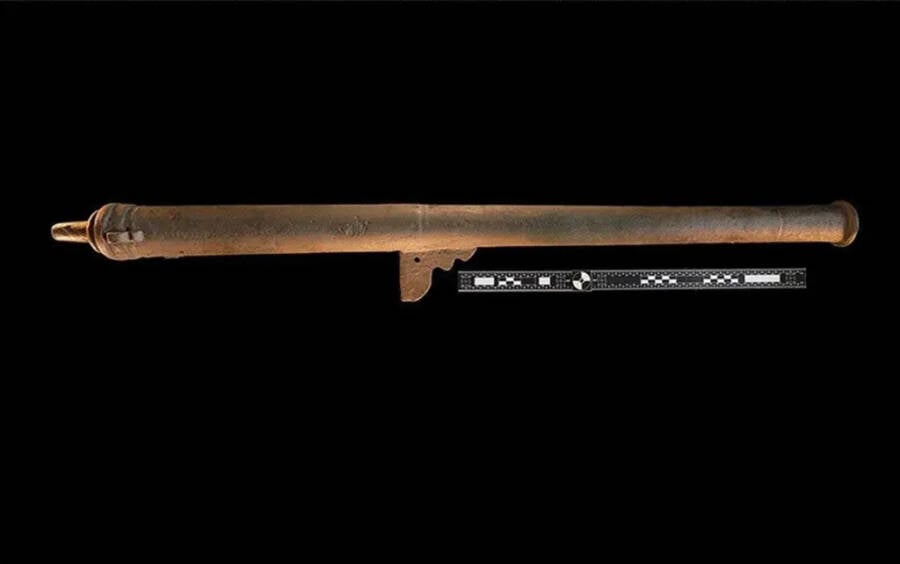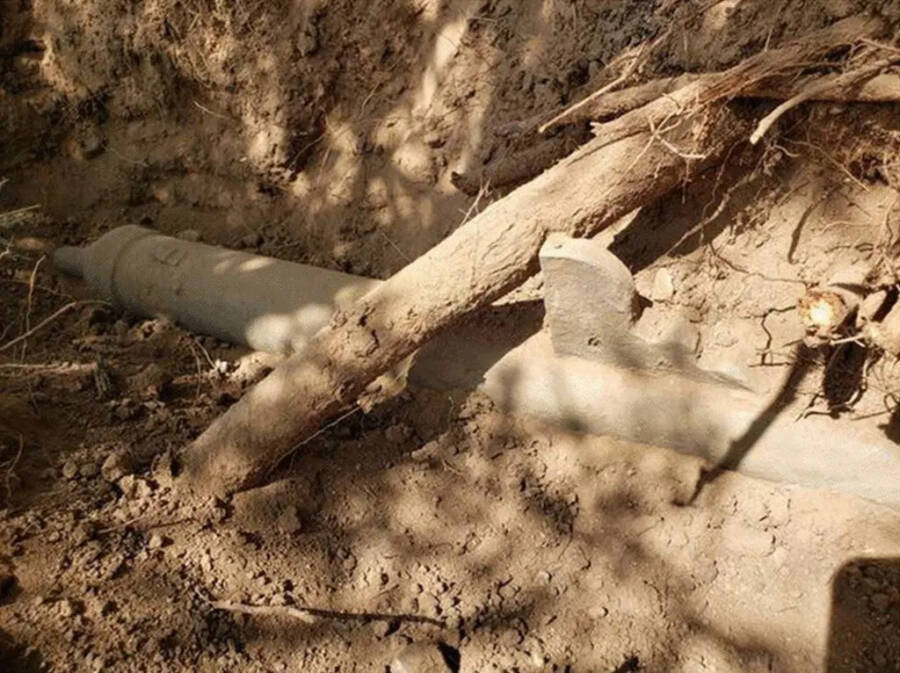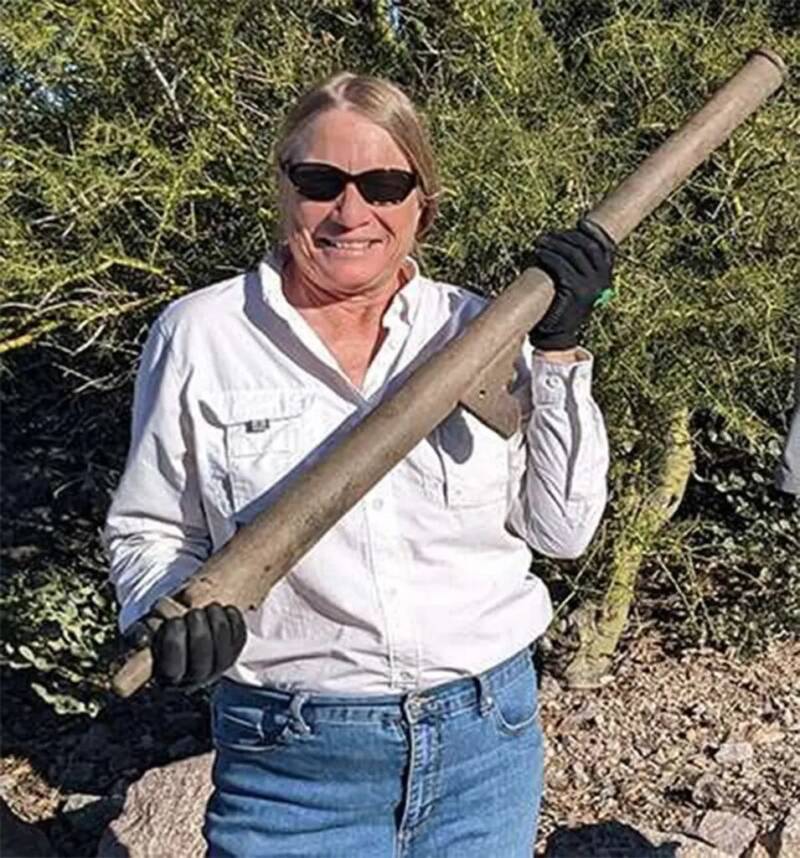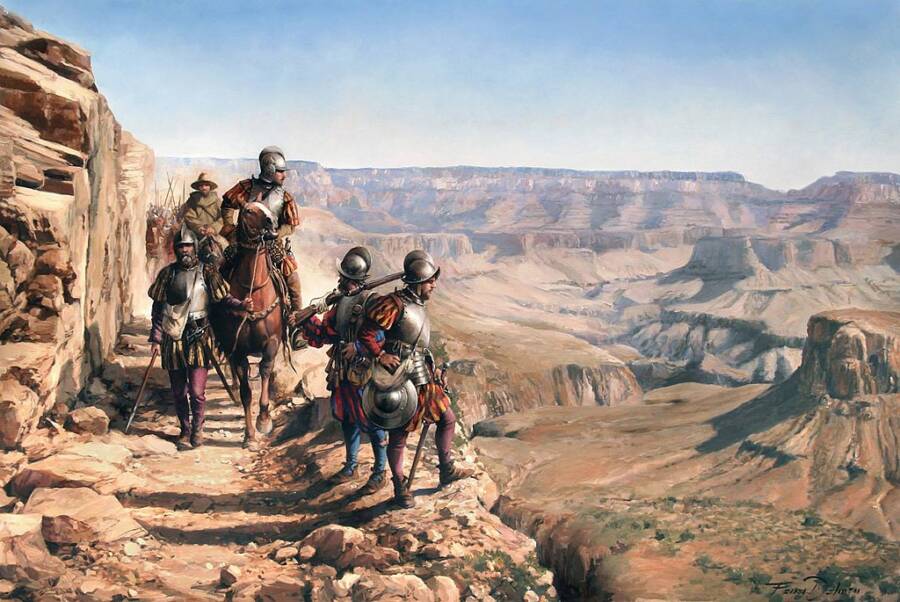Archaeologists discovered a 500-year-old bronze cannon that was carried by one of the first European expeditions into the New World, Spanish conquistador Francisco Vázquez de Coronado's 16th-century journey into the American Southwest.

International Journal of Historical ArchaeologyThis 500-year-old bronze cannon was discovered in the ruins of a stone and adobe structure in Arizona.
Archaeologists have officially uncovered the oldest firearm ever found in the continental United States, a 500-year-old bronze cannon. The wall gun is linked to the 16th-century expedition of Spanish conquistador Francisco Vázquez de Coronado into the Southwestern United States. It was discovered beneath the remnants of an adobe wall believed to have collapsed during a battle between Coronado’s forces and a local Indigenous tribe.
Measuring 42 inches long and weighing 40 pounds, the two-person portable gun was meant to provide protection for the expedition at their outpost in Arizona’s Santa Cruz Valley. However, the firearm shows no evidence of use, and it was likely abandoned when Spanish forces retreated after an attack on the settlement. Still, its discovery is shedding new light on the Coronado expedition.
Archaeologists Find A 500-Year-Old Gun In The Arizona Desert

International Journal of Historical ArchaeologyThe bronze cannon as it was discovered in the dirt.
For more than three decades, Deni Seymour, an archaeologist who specializes in Indigenous and Spanish history of the American Southwest, has studied the historical route of conquistador Francisco Vázquez de Coronado.
In 1540, Vázquez de Coronado left Mexico for the U.S. in search of the “Seven Cities of Gold.” With an expedition totaling roughly 2,500 people, Vázquez de Coronado traveled as far north as Kansas before returning to Mexico in 1542.
Because Vázquez de Coronado’s journal entries were unclear, researchers have long debated the true route of his expedition. Very little archaeological evidence of Vázquez de Coronado and his group has ever been discovered — until recently.
After poring over old manuscripts and surveying terrain in southern Arizona, archaeologist Deni Seymour and her team located a lost settlement of Vázquez de Coronado — and there, Seymour unearthed the oldest firearm ever found in the continental U.S.

Deni SeymourDr. Deni Seymour poses with the 500-year-old firearm.
The discovery started with a single nail. When Dr. Seymour spotted several iron nails dating back to the 16th century in the Santa Cruz Valley of Arizona, she was convinced she was on the right track. Seymour continued excavating the area until she found the bronze cannon hidden beneath a collapsed wall on the floor of a stone and adobe structure.
It was 42 inches long and weighed about 40 pounds. It was likely cast in Mexico or the Caribbean because it featured a simple design rather than the ornamental decorations typically seen on weapons made in Spain. It would have primarily been used as a wall gun to defend the Spanish fortifications, but it could also be placed on a wooden stand and transported to blast through the adobe walls of the local Indigenous people from distances of up to 700 yards.
Radiocarbon dating confirmed that the gun dated back to the time of the Coronado expedition.
“This wall gun is the first gun known to be associated with the Coronado expedition and is the oldest firearm ever found within the continental U.S.A., and perhaps the oldest cannon currently known on the continent,” researchers wrote in their study, which has now been published in the International Journal of Historical Archaeology.
Remarkably, the cannon showed no evidence that it had ever been fired — and researchers think they know why.
The Ill-Fated Expedition Of Francisco Vázquez De Coronado
When Vázquez de Coronado left Mexico with his caravan of soldiers, their families, and some 1,500 Indigenous allies, he traveled into the modern-day Southwestern U.S. to search for the Cities of Cíbola, or the “Seven Cities of Gold.”

Augusto Ferrer-Dalmau Nieto/Wikimedia CommonsLa conquista del Colorado, by Augusto Ferrer-Dalmau, depicts Coronado’s expedition and his soldiers’ arrival at the Grand Canyon.
In Arizona, they built a small town known as San Geronimo III. However, not long after the settlement was constructed, the Sobaipuri people attacked, forcing the Spanish to retreat. The surviving soldiers left so quickly they abandoned some weapons — including this bronze cannon. It is possible that the firearm was never used because the adobe structure on which it was mounted collapsed during the attack before the Spanish even had a chance to load the weapon.
“This final blow seems to be the precipitating event that led to the abandonment of the wall gun, where it remained snugly encased in an eroded Spanish adobe-and-rock-walled structure [ruin] for 480 years,” Seymour and her colleagues wrote.
While the cannon was the most significant discovery made at San Geronimo III, other artifacts such as fragments of European pottery, olive jars, and weapon parts are adding to the wealth of information about the Coronado expedition that’s been revealed at the newfound site.
After reading about the oldest firearm ever found in the United States, learn about nine of the world’s oldest structures and the stories behind them. Then, read about 11 of the oldest people to ever live.





